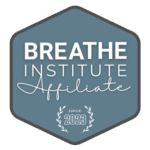
San Francisco and Marin CA
Temporomandibular Dysfunction (TMD) affects the temporomandibular joints (TMJ), which connect the lower jaw to the skull. It also impacts jaw muscles, neck muscles, and muscles related to breathing and ear function. Early detection and treatment of TMD are key to preventing long-term discomfort and complications. This article explores the early signs of TMD and effective treatment options offered at Glen Park Dental.
Understanding TMD
Temporomandibular Dysfunction (TMD) refers to a range of conditions affecting the TMJ, causing pain and dysfunction in the jaw joint and surrounding muscles. The TMJ plays a vital role in daily activities like talking, chewing, and yawning. When this joint is compromised, it can cause significant discomfort and affect normal function. Recognizing early signs of TMD is essential for timely intervention and relief.
Early Signs and Symptoms of TMD
Identifying TMD early allows for effective treatment.
Common symptoms include:
- Intermittent, Painless Popping or Clicking: Early TMD often causes jaw clicking or popping sounds when opening, closing, or chewing. These sounds are caused by displacement of the joint disc or irregular jaw movement. Though painless at first, ignoring these sounds can lead to more serious issues over time.
- Jaw Pain or Tenderness: Persistent discomfort or soreness around the jaw, especially when chewing or speaking. Pain may also extend to the face and neck, affecting everyday activities.
- Headaches and Migraines: Frequent headaches or migraines can be linked to TMD due to strain and tension in jaw and neck muscles. Headaches are among the most common symptoms of poor jaw alignment.
- Ear Pain or Ringing (Tinnitus): TMJ issues can cause unexplained ear pain or ringing because of the close proximity of the joint to the ear canal. Jaw tension may affect tiny muscles controlling eardrum tightness and the Eustachian Tube.
- Facial Pain or Discomfort: Pain or pressure around the jaw, cheeks, and temples is a typical TMD symptom, which may worsen with jaw movement.
- Neck and Shoulder Pain: Due to the interconnected muscles and nerves, TMD can cause pain radiating into the neck and shoulders.
- Difficulty Chewing or Opening the Mouth Wide: Limited jaw movement or discomfort when chewing or opening wide can indicate muscle tension, joint inflammation, or structural TMJ issues.
Causes and Risk Factors of TMD
Understanding what contributes to TMD can help with prevention and treatment:
- Jaw Misalignment: Improper alignment of the upper and lower jaws creates uneven pressure on the TMJ, leading to pain and dysfunction.
- Muscle Tension and Stress: Jaw clenching or teeth grinding, often due to stress or anxiety, overworks jaw muscles causing inflammation and pain.
- Joint Dysfunction and Arthritis: Conditions like osteoarthritis or rheumatoid arthritis can cause joint degeneration or inflammation affecting the TMJ.
- Trauma to the Jaw or Head: Injuries from accidents or impacts can displace the TMJ or damage surrounding muscles and ligaments.
- Poor Posture: Bad posture, such as slouching or forward head position, strains the TMJ and related muscles.
- Genetic Factors: Some people inherit traits affecting jaw structure and function, increasing TMD risk.
- Other Medical Conditions: Sleep apnea, fibromyalgia, or chronic fatigue syndrome can also contribute to TMD symptoms.
Diagnosing TMD at Glen Park Dental
Our diagnostic process includes:
- Comprehensive Evaluation: A thorough examination of your jaw, face, neck, and head, along with medical history review.
- Advanced Diagnostic Tools: We use cutting-edge technologies such as electromyography (EMG) to measure muscle activity, ultra-low frequency TENS to relax muscles, computerized jaw function analysis, bite pressure mapping, and 3D imaging with cone beam CT scans. These tools help us pinpoint the exact causes of your symptoms.
Treatment Approaches at Glen Park Dental
We offer a range of non-invasive treatments tailored to your needs, including:
- Neuromuscular Dentistry: Custom therapies to realign the jaw and optimize TMJ function.
- Physical Therapy and Posture Training: To relieve symptoms and improve muscle function.
- Orthotic Devices: Custom-made appliances to support proper jaw alignment and reduce muscle strain.
- Long-Term Care Plans: Including orthodontic options and restorative treatments to maintain jaw health and function without surgery.
Self-Care Tips to Manage TMD
You can help manage TMD symptoms with these practices:
- Manage stress with relaxation techniques like meditation or yoga.
- Maintain good posture, especially while working at a desk.
- Perform gentle jaw exercises to improve mobility.
- Avoid hard foods, chewing gum, and excessive jaw movements.
- Schedule regular dental check-ups for early detection.
Take the First Step Toward Relief
Early recognition and treatment of TMD can prevent serious complications and improve your quality of life. Glen Park Dental in San Francisco offers advanced diagnostics and personalized care to address your symptoms effectively.
If you’re experiencing any signs of TMD, call us today at (415) 799-3900 to schedule a consultation. Your journey to a healthier, pain-free jaw starts here.


